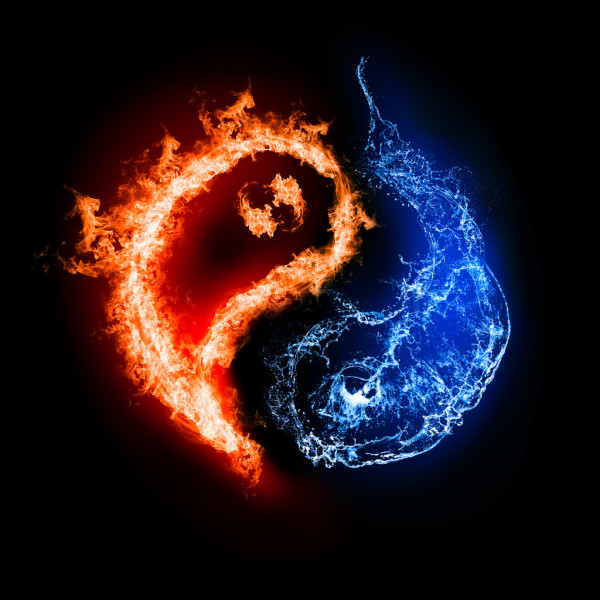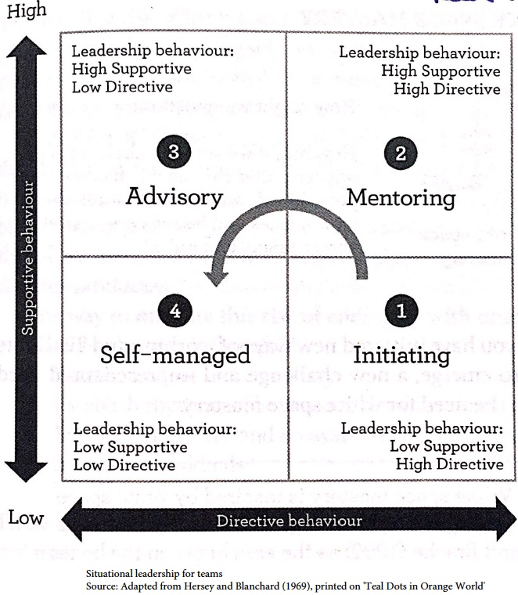EN
How to Organize the Workplace of the Future?
21-04-2021
‘Teal Dots in an Orange World’ book, written by Erik Korsvik Ostergaard, investigates around the question “How to Organize the Workplace of the Future”. To my understanding the book points out a main message:
“New Leadership Approaches in the New World”
A New World Means New Problems
Classical organizations are designed to deliver predictable output, which is not VUCA.
“In VUCA world, embodying leadership in modern organizations and handling the change are like yin and yang: New generations need both clear guidance but no limitations”.

- Modern organizations are characterized by shared values, and culture, transparent goals and projects, and free flow of information and feedback.
- Modern organizations are shifting from a hierarchical structure to a sustainable ecosystem: interacting as a system (which is a fundamentally different task from running a classical, hierarchical organization). Running an eco-system is about: understanding all moving parts both people and mechanisms that make them move and interact.
- Modern organizations are requiring adaptability (which is the combination of autonomy and alignment).
What’s the Problem?
Modern practices such as agile present a solution to the first part -autonomy-. However, -scaling up in alignment- is a challenge. Because there are 2 important premises for balanced success of autonomy & alignment:
- Widespread understanding among the teams or organizations’ purpose
- Organization culture must focus on fellowship.
Key to the ability to do this is a holistic mindset and understanding of the organization’s dynamics. It is also important to be able to predict the behavior of internal stakeholders and know their strengths.
A Future to Come
E. Ostergaard defines four observations about a future to come:
- Getting extraordinary things done happens in small teams only
- Work happens in highly connected networks of leaders (internal influencers, experts) in a circle-like conveying the message of collaboration
- Tactical execution happens when touchpoints are frequent and physical, and when the rhythm is synchronous
- Reorganization as an activity is pivot point for transformational leadership
From Leadership to Designing => Transformational Leadership
Reorganization is a matter of design.
How you design, form and run your organization is the embrace of differences in the structures and maturity of teams. You will need different internal design and collaboration mechanisms based on the mindsets of individual team members.
In short, new leadership should focus on designing the right thing -based on mindsets- in order to allow to ‘design the things right’
Redesign without mindset: unsuccessful
Mindset without redesign: unsuccessful
Redesign with mindset in place: successful
As a starting tip: First think about your framework:
- Why are we here? What is our purpose?
- Who are we? What are our culture and virtues?
- What meaningful goals are we pursuing?
- How do we plan to get there? What is our strategy?
While walking on this journey, wrong solution could be to apply old tools as we know them.
What do we mean by wrong solution?
_ Form a task force, execute and analyze a problem,
_ Design and engineer a solution,
_ Put into production,
_ Then create a functional structure and KPIs,
_ Follow up mechanisms, reports
_ And even have a standard operating procedure with best practices in it.
OK..Then what is the right solution?
_ Abandon the idea of teams working in hierarchy
_ Consider self-managed teams with their own aims, domains, members, ecosystems, rhythms and responsibilities.
The new way of work requires paradigm shift in mindset, skill, behavior and professionalism. And this requires a change in definition, measurement of organizational cohesion and what success is.

To begin, you need 9 components:
- Purposeful organization, as a platform
- Culture and fellowship
- Individual coaching and stewardship
- Distributed leadership and decision-making
- Self-managed delivery teams
- Advisory boards
- Rhythms in and across teams, network and organization
Leadership & Role of Advisory Boards
E. Ostergaard emphasizes the importance of Advisory Boards and how leadership traits can be used via this enabler.
The reason of this emphasis is clear because new leadership will be something that more people are encouraged to take part. So, focusing on 2 things:
- Setting the direction
- Distributing the decision-making
Be careful! If you encourage the teams to be self-managed, you also encourage them to shape their own culture.
Never leave team alone!
Role of advisory boards is different than old steering committees. It is to provide the minimum but right amount of advice, input, coaching, support and instruction to the teams, based on their maturity and the situation they are in.
The board ensures that the team is ‘doing the right thing’ in accordance with the organizational purpose and culture and company strategy.

How Advisory board act?
Advisory board should meet with the team on a bi-weekly basis – no less and not ‘when we need it’. Rhythm and steadiness are important.
Like a Coach or mentor, Advisory board should be excellent at asking questions such as:
- Have you considered ..?
- What will happen if..?
- What is your approach to …?
- Who have you involved in…?
How Teams act?
Teams must have end-to-end accountability for their task, and the ability to define and agree on scope and expected quality (with the guidance of advisory board) For Teal teams, the formal design of an organization is not important. Solving the problem is.
The more time and effort the management team put into cultural work and team collaboration, the more social capital and psychological safety are created. And; Redesign with mindset in place: successful

Here is the end of my summary ‘Takeaways’ ... Thanks for reading ???? I would really be appreciated to hear your comments.
When I was reading this nice book, the holistic approach of the writer and emphasis on redesigning with mindset got my attention and appreciation. Because we -as research-based company specialized in communication and engagement areas- always promoted that every company is unique and you need to understand the internal dynamics. And, we created a reward-winning model to understand company’s intangible assets (cultural patterns).
If you’re interested, you can click on Business Agility section to understand our holistic approach and download the Copyright model.
For further questions, please contact: info@hagaconsultancy.com
If You Want To Share

